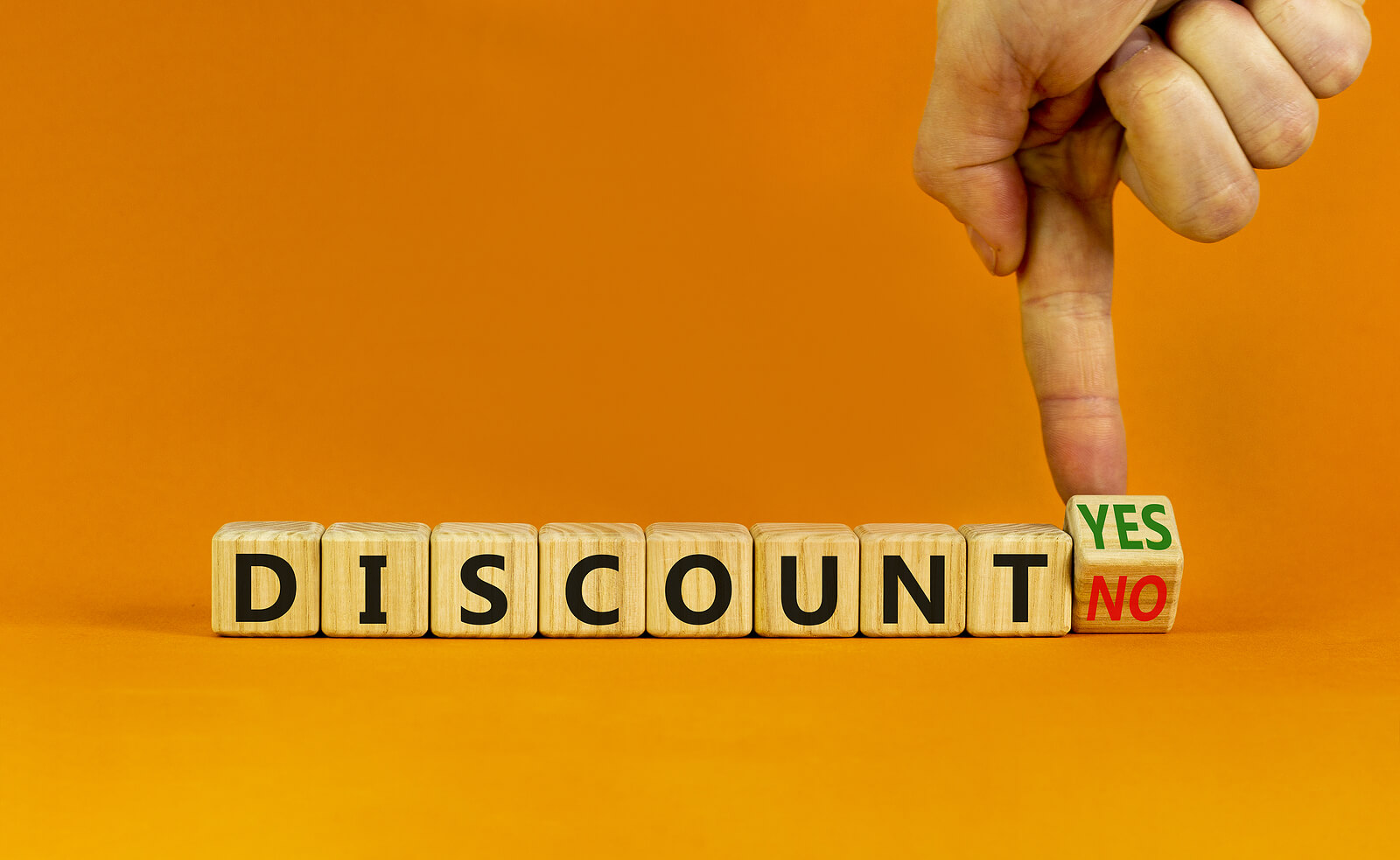
Have you ever thought about discounting your business’s prices in order to get more customers? Perhaps you have even done this in the past!
There are a handful of scenarios in which you might be tempted to discount your price. Perhaps you have recently seen a rapid decline in sales. Maybe your competitor down the road is rolling out a similar product or service at a much lower price.
In any case, it’s important that you don’t rush to slash your prices. Today, I’m going to show you why this method of thinking can harm your business and actually have the opposite effect — causing you to lose even more profit.
How Does Discounting Your Price Affect Profits?
One of the biggest misconceptions is that discounting your price allows you to make more sales, and therefore, earn more profits. While yes, discounting your price can earn you more customers and sales, that doesn’t equate to higher profits.
Remember, you’re not in the business of earning a customer. You’re not in the business of making a sale. You’re in the business of making a profit, and the reality is that most businesses don’t end up making the number of sales needed to truly offset the profit that is lost in a discounted price.
So, let’s crunch a few numbers to demonstrate this.
Imagine your profit margin on a particular sale is 40% — in other words, the price of a sale minus the cost of goods sold and labor. By slashing your sale price by just 10%, you need to increase your customer base by 33% just to break even. So, if you have 300 customers, you need to increase that number to 400 just to match the amount of profit that you were earning before.
Even with a 50% profit margin, a mere 10% discount requires you to add 25% to your customer base. So, if you have 400 customers, you will need to increase that number to 500 just to break even.
What’s more, these figures can be misleading, as adding more customers and increasing your number of sales typically means that your business needs to work harder in order to keep up. You may even incur additional labor costs — such as overtime pay, for example.
2 Times When You Can Discount Your Price
Of course, there are exceptions to every rule. When it comes to discounting one of your business’s products or services, it can be a viable option if you plan for one of the following:
1. When It Is Only a Short-Term Solution
If you want to discount your product or service price in order to move excess inventory or increase your customer base quickly, it should only be temporary.
So, above all, make sure you have a clear plan in place. Map out when you are going to slash the price, how you plan to recover and increase profits, and when you are going to end the discount.
The danger in keeping a product or service discounted for too long is that your customer base will come to expect that discounted price moving forward. When it comes time to finally increase your sale price, some customers may have a lower perceived value of your product or service — making it difficult for them to justify paying the higher price again!
2. When You Plan to Upsell and Cross-Sell to Customers
Discounting your price can be effective if you are able to upsell and cross-sell. In other words, slashing your price but encouraging a customer to purchase a premium version of the product or complementary items can help you recover some of the profit you are losing in the sale price for the unit.
Of course, upselling and cross-selling are much easier said than done. You will need to make sure that you have a capable team and that your employees are properly trained to upsell and cross-sell.
Be Careful Before You Discount Your Price
While a 5% or 10% discount on a product or service might not always seem like a major loss, consider the amount of additional energy your entire business will need to expend just to break even.
So, be sure to always think twice before slashing those prices. Most of the time, there are much better solutions to help you increase profits!